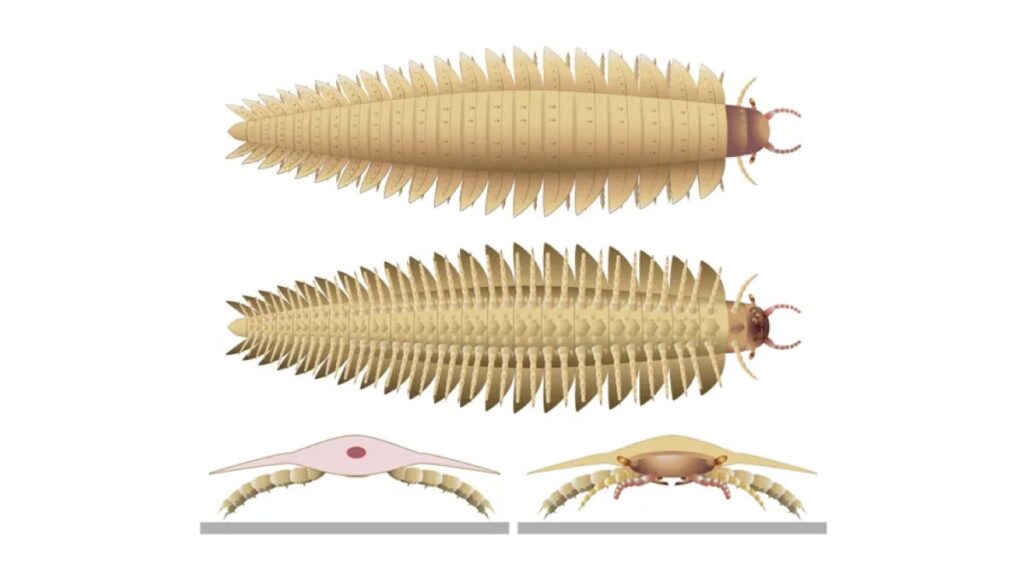A fossil has been discovered for the first time revealing the head of Arthropleura, a centipede-like arthropod that lived approximately 346 to 290 million years ago. Arthropleura was one of the largest arthropods ever known, growing up to 8.5 feet (2.6 meters) in length. The discovery of this fossil in Montceau-les-Mines, France, solves a long-standing mystery about the creature’s evolutionary position. Mickaël Lheritier, a paleontologist at the University Claude Bernard Lyon 1, highlighted the importance of the discovery, highlighting the importance of the newly discovered features of its head.
Fossils reveal evolutionary clues
The fossil includes two juvenile specimens of Arthropleur, preserved in rock. The researchers used CT scans to study the remains and discovered features such as stalked eyes and centipede-like mandibles. This combination of traits has puzzled scientists for years, as Arthropleura seemed to share characteristics with both centipedes and centipedes. With this new evidence, paleontologists can better understand its position in the arthropod family tree.
Unique features of the arthropleura
The newly discovered head provides insight into its life cycle. The fossil revealed that Arthropleura had stalked eyes – an unusual feature not seen in its close relatives such as centipedes or centipedes. Typically found in aquatic animals, these eyes lead researchers to believe that young Arthropleura may have been semi-aquatic, spending part of their early life in water before becoming terrestrial adults.
Scientific influence
This discovery answers a long-standing debate within the scientific community about the place of Arthropleura in evolution. According to James Lamsdell, a paleontologist at West Virginia University, the discovery helps resolve Arthropleura’s evolutionary relationships, confirming that it is a centipede relative despite its unique features.


